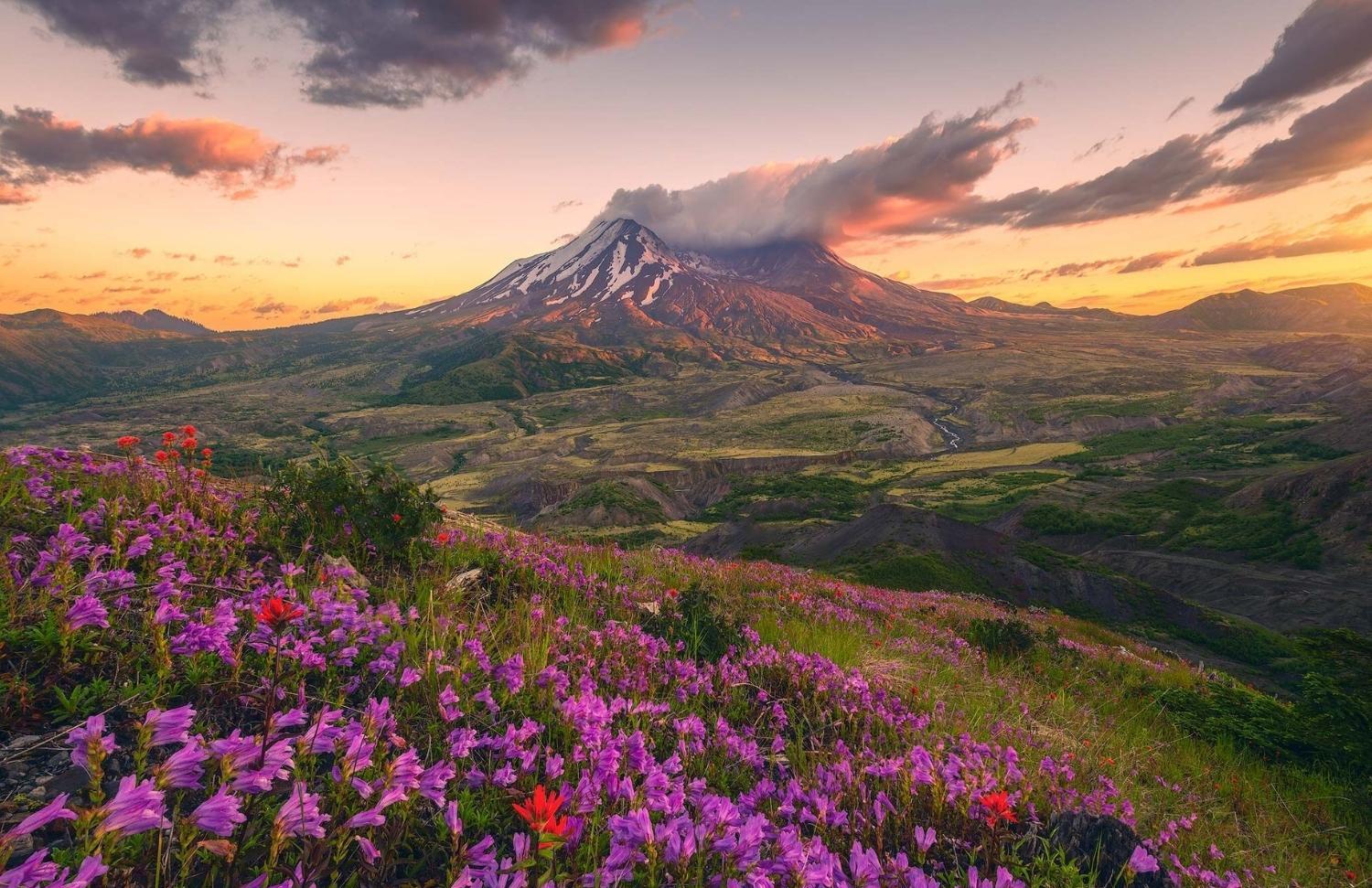Curious Facts About Mount St. Helens Blast Zone Recovery

Have you ever wondered how nature bounces back after a massive volcanic eruption? Mount St. Helens erupted in 1980, leaving a huge blast zone in its wake. The area looked like a barren wasteland, but over the years, it has transformed in surprising ways. Plants and animals have returned, creating a unique landscape. Scientists study this recovery to understand how ecosystems rebuild. Visiting the blast zone today offers a glimpse into nature's resilience. From wildflowers to elk, life has found a way to thrive again. Curious to learn more about this incredible recovery? Let's dive into the fascinating story of Mount St. Helens.
Nature's Resilience
Mount St. Helens erupted in 1980, leaving a desolate landscape. Yet, nature has an incredible way of bouncing back. Here are some fascinating places where you can witness this recovery firsthand.
- Spirit Lake
Spirit Lake, once filled with ash and debris, now teems with life. The lake's ecosystem has rebounded, with fish and plant life thriving. It's a testament to nature's ability to heal.
- Pumice Plain
The Pumice Plain, covered in volcanic rock, has become a hotspot for scientific research. Plants like lupines have taken root, creating a unique landscape where life slowly returns.
Wildlife Comeback
Animals have also made a surprising return to the blast zone. These areas show how wildlife adapts and thrives even after catastrophic events.
- Elk Rock Viewpoint
Elk Rock Viewpoint offers a chance to see elk herds grazing. These animals have adapted to the new environment, finding food and shelter in the recovering landscape.
- Ape Canyon
Ape Canyon, named after a Bigfoot legend, is now home to diverse wildlife. Hikers often spot deer, birds, and even the occasional black bear.
Forest Regeneration
Forests around Mount St. Helens are slowly regenerating. These spots highlight the gradual but steady return of trees and plant life.
- Hummocks Trail
Hummocks Trail winds through mounds of volcanic debris. Over time, trees and shrubs have taken root, transforming the area into a green oasis.
- Windy Ridge
Windy Ridge offers panoramic views of the regrowing forest. The sight of young trees sprouting amidst the volcanic landscape is both eerie and beautiful.
Scientific Discoveries
The blast zone has become a living laboratory for scientists. These locations provide insight into how ecosystems recover from volcanic eruptions.
- Mount St. Helens National Volcanic Monument
This monument is a hub for research. Scientists study soil, plants, and animals to understand the recovery process, making it a fascinating place for visitors interested in science.
- Johnston Ridge Observatory
Johnston Ridge Observatory offers educational exhibits and a close-up view of the volcano. It's a great spot to learn about the eruption and ongoing recovery efforts.
Unique Landscapes
The eruption created unique landscapes that are both beautiful and haunting. These places showcase the dramatic changes brought by the eruption.
- Lava Canyon
Lava Canyon features waterfalls and rugged terrain formed by lava flows. The stark contrast between the barren rock and lush vegetation is striking.
- Plains of Abraham
The Plains of Abraham, a vast expanse of volcanic ash, offers a surreal hiking experience. The barren landscape, dotted with hardy plants, feels like another world.
Nature's Resilience at Mount St. Helens
Mount St. Helens' recovery shows nature's incredible ability to heal. After the 1980 eruption, the area looked like a wasteland. Today, it's a thriving ecosystem. Plants and animals have returned, creating a new balance. Scientists study this recovery to understand how ecosystems rebuild. The blast zone is now a living lab, offering lessons in resilience and adaptation. Visiting the area, you can see how life finds a way to bounce back. Trails and viewpoints provide glimpses of this transformation. The story of Mount St. Helens is a reminder of nature's power and resilience. It inspires hope for other damaged ecosystems around the world. Whether you're a nature lover or just curious, the recovery of Mount St. Helens is a fascinating journey worth exploring.

